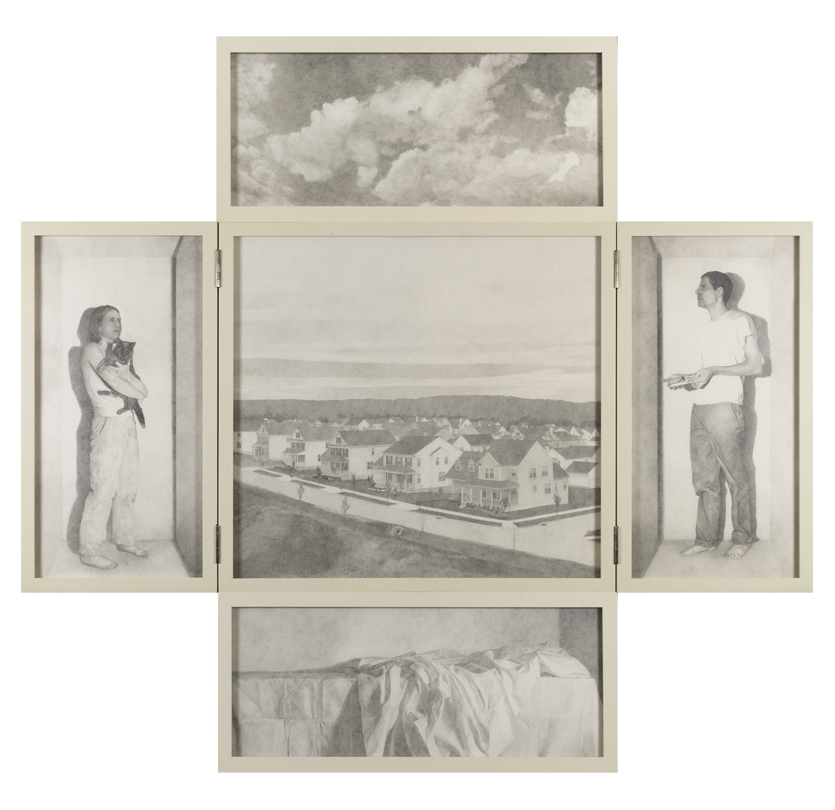
The Assumption at Ridglea
Robert Matthews
"The Assumption of Ridglea" is composed of seven drawings arranged in a traditional altarpiece form. Each of the drawings was done from life or on site. This polyptych is based around a central drawing showing a subdivision near Valley Forge, Pennsylvania. Above the uniform, quiet, and clean neighborhood an extraordinary event is taking place. An androgynous, silhouetted figure is shown rising into the sky, presumably as a spirit triumphing over matter. In the altarpiece's wings, the artist and his wife look on from niches usually devoted to representations of patron saints. She holds a cat, he holds a mousetrap. Mr. Matthews has cited Robert Campin's "Mérode Altarpiece" (ca. 1425-30; Cloisters Collection, Museum of Modern Art, New York) as the source of the mousetrap. This detail, long considered enigmatic and eccentric produced several extraordinary interpretations and intense debates among art historians. Many believe that it refers to a passage from Saint Augustine in which he says that the Marriage of the Virgin and Christ's death on the cross were like the bait and trap set to fool the devil. The cat, long a symbol of lust, may represent earthly temptation and the presence of sin in even mundane places. Matthews depicted an empty bed, the linens disturbed by the body's translation from mortal to eternal life. Above, Matthews presented a closer view of clouds; on the front, a schematic line drawing of the landscape around Gettysburg, Pennsylvania provides the traditional grisaille function of closed wings.
Artist
Date of Birth
(b. 1974)
Date
2004-2005
Medium
Graphite on paper, in five frames
Dimensions
overall with wings closed: 49 x 27 1/4 in. (124.46 x 69.215 cm.)
Accession #
2005.17a-e
Credit Line
Contemporary Art Development Fund
Copyright
© artist or artist's estate
Category
Subject
We're so excited you're planning to visit PAFA!
Make time for art — visit us Thursday to Sunday.
Before reserving your tickets, please review helpful information about museum hours, accessibility, building access, and special admission programs.
If you have any questions, feel free to reach out to us at visitorservices@pafa.org — we’d love to help!
